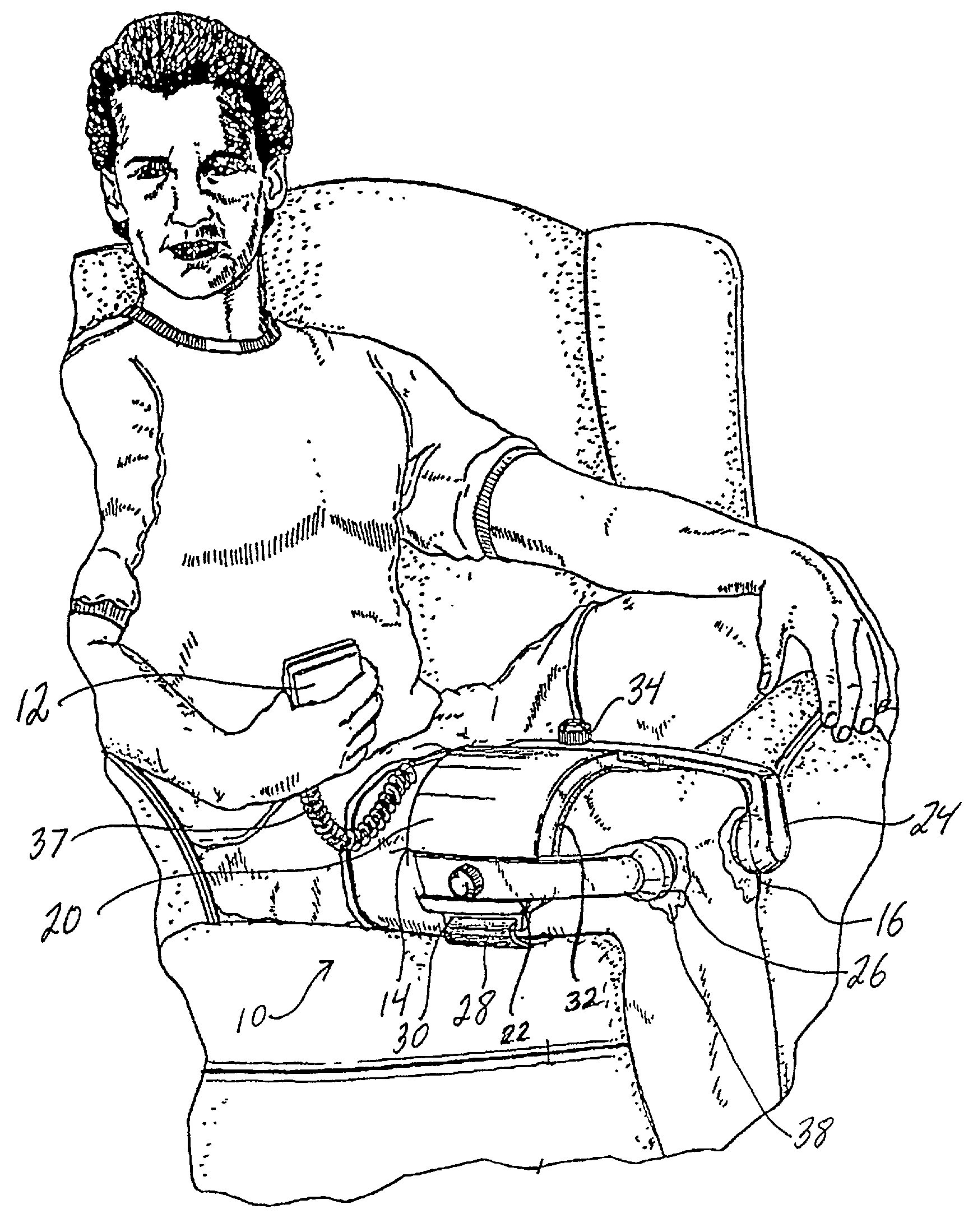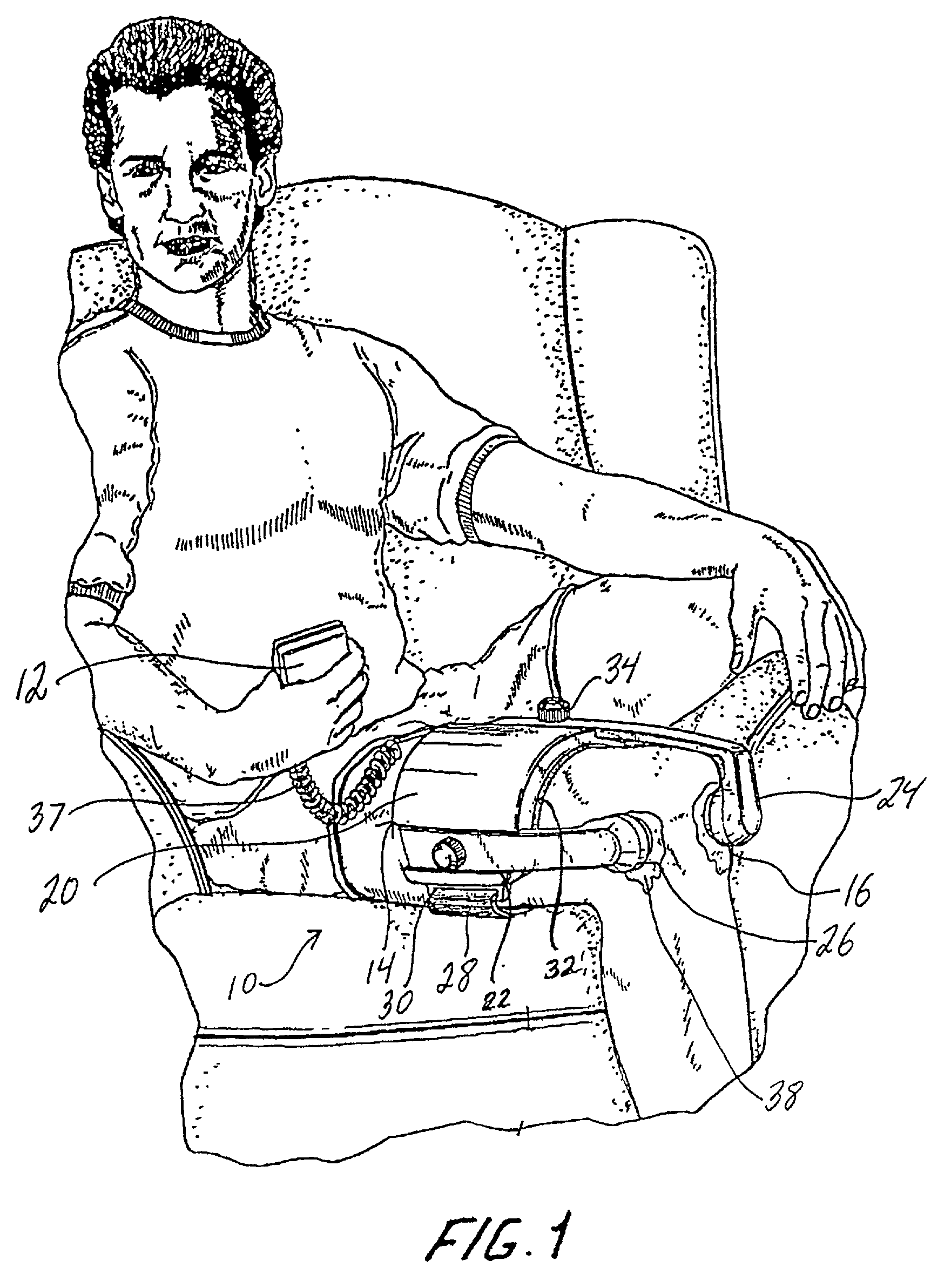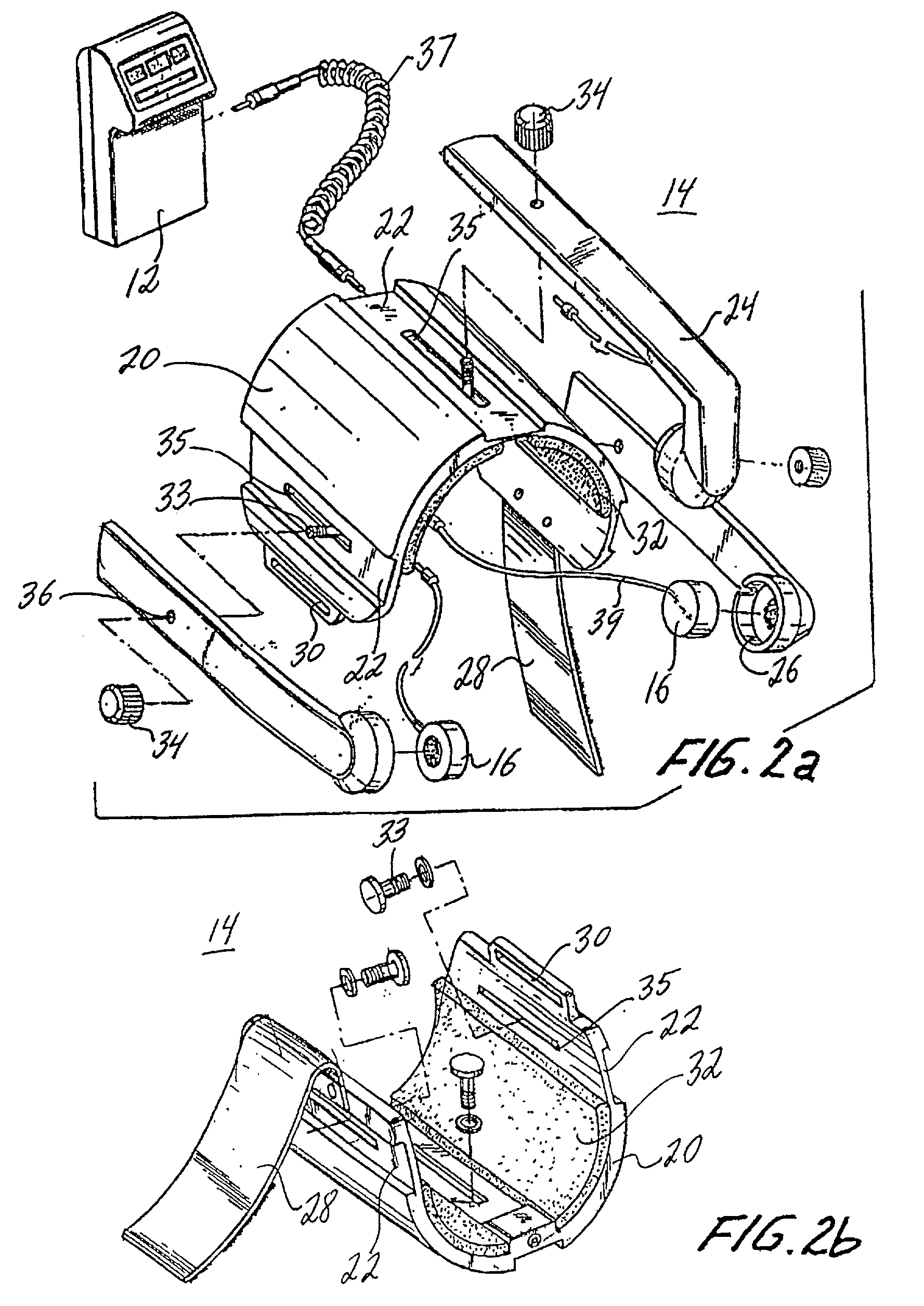Method and apparatus for connective tissue treatment
a connective tissue and treatment method technology, applied in the direction of elcosanoid active ingredients, peptide/protein ingredients, therapy, etc., can solve the problems of reducing the healing time, reducing the applicability of utility, and not having comparable proteoglycan content, etc., to achieve the effect of promoting healing and wide applicability
- Summary
- Abstract
- Description
- Claims
- Application Information
AI Technical Summary
Benefits of technology
Problems solved by technology
Method used
Image
Examples
example 1
[0115]An ovine model of soft tissue graft (digital extensor tendon) reconstruction of the ACL was utilized to allow for assessment of the method and apparatus of the invention. A modified ACL reconstruction was performed on 21 animals in three groups of 7 animals. Control groups of 2 animals (provided with no ultrasound treatment), and experimental groups of 5 animals (provided with ultrasound treatment for 20 minutes continuously each day) were harvested at the end of 3, 6, and 12 weeks.
[0116]The right hind limb was operated on in all animals. The anterior cruciate ligament (ACL) was visualized and removed at the insertion site through an antero-medial arthrotomy. The ACL reconstruction was performed using a digital extensor tendon graft. The tendon graft was harvested from the same limb by 2 stab incisions. The graft was whip stitched using # 2 Ethibond and prepared using the Acufex Graftmaster. The graft was doubled and passed through 4.5 mm tunnels in the tibia and femur. Endobu...
example 2
[0122]Hartley strain guinea pigs that spontaneously develop osteoarthritis (OA) were used for this study. This strain develops an arthropathology that mimics human OA between the age of 6 and 12 months of age. The OA is confined to the medial tibia plateau in the early stages of the disease.
[0123]Eight animals were utilized for this study. The animals were 2 months of age when the study was initiated. The left legs of the animals were treated with pulsed low intensity ultrasound (1.5 MHz, pulsed at 1 KHz, 200 μs burst width) for a period of 4 months. The ultrasound was applied for 20 minutes per day, for 5 days per week. The ultrasound transducer was coupled to the skin with gel on the media side of the left knee after first shaving the knee joint. The transducers were held in place during treatment with strapping. The animals were terminated at 6 months of age after 4 months of treatment.
[0124]The ultrasound treated (FIG. 23A) and control (FIG. 23B) knee joints were dissected and d...
PUM
| Property | Measurement | Unit |
|---|---|---|
| repetition frequency | aaaaa | aaaaa |
| frequency | aaaaa | aaaaa |
| repetition frequency | aaaaa | aaaaa |
Abstract
Description
Claims
Application Information
 Login to View More
Login to View More - R&D
- Intellectual Property
- Life Sciences
- Materials
- Tech Scout
- Unparalleled Data Quality
- Higher Quality Content
- 60% Fewer Hallucinations
Browse by: Latest US Patents, China's latest patents, Technical Efficacy Thesaurus, Application Domain, Technology Topic, Popular Technical Reports.
© 2025 PatSnap. All rights reserved.Legal|Privacy policy|Modern Slavery Act Transparency Statement|Sitemap|About US| Contact US: help@patsnap.com



